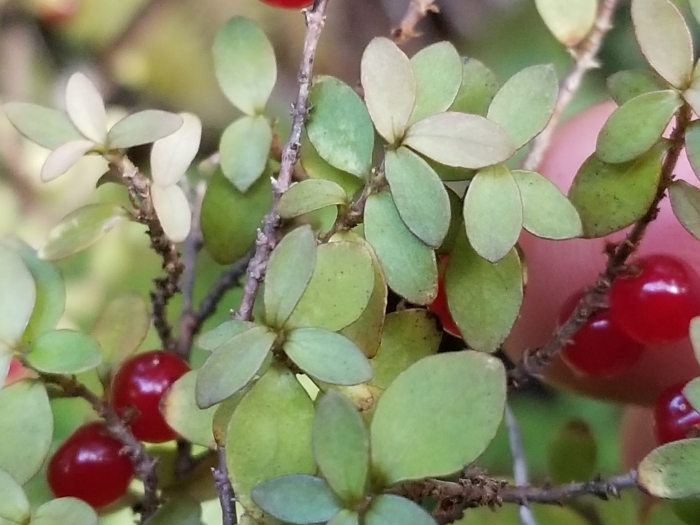Twiggy Coprosma
(Coprosma rhamnoides)
Twiggy Coprosma (Coprosma rhamnoides)
/
/

Brett Sandford
CC BY 4.0
Image By:
Brett Sandford
Recorded By:
Copyright:
CC BY 4.0
Copyright Notice:
Photo by: Brett Sandford | License Type: CC BY 4.0 | License URL: http://creativecommons.org/licenses/by/4.0/ | Rights Holder: Brett Sandford | Publisher: iNaturalist | Date Created: 2019-07-08T15:59:49-07:00 |


















































Estimated Native Range
Summary
Coprosma rhamnoides, commonly known as Twiggy Coprosma, is an evergreen shrub endemic to the coastal forests, scrublands, and rocky areas of New Zealand. It typically forms a compact, dense shrub up to 6.5 feet (2 meters) tall and wide. The plant’s branching habit is intricate, with many thin, interlacing branches creating a distinctive twiggy appearance. Its leaves are small, simple, and variable in shape, often with a glossy surface. The flowers of Coprosma rhamnoides are unisexual, inconspicuous, and likely wind-pollinated, blooming in the spring. Although the flowers are not showy, the shrub’s form and foliage provide visual interest throughout the year.
Twiggy Coprosma is valued for its resilience to harsh conditions, including high winds and exposure to weather, making it suitable for coastal plantings and challenging garden sites. It thrives in full sun to part shade and is adaptable to a range of soil types, preferring those with slow to medium drainage. This shrub is often used for low hedges, mass plantings, or as a textural element in mixed borders. While it is generally low-maintenance, it can benefit from occasional pruning to maintain its dense form. Twiggy Coprosma is not known for significant pest or disease problems, but it may require protection from frost in colder climates.CC BY-SA 4.0
Twiggy Coprosma is valued for its resilience to harsh conditions, including high winds and exposure to weather, making it suitable for coastal plantings and challenging garden sites. It thrives in full sun to part shade and is adaptable to a range of soil types, preferring those with slow to medium drainage. This shrub is often used for low hedges, mass plantings, or as a textural element in mixed borders. While it is generally low-maintenance, it can benefit from occasional pruning to maintain its dense form. Twiggy Coprosma is not known for significant pest or disease problems, but it may require protection from frost in colder climates.CC BY-SA 4.0
Plant Description
- Plant Type: Shrub
- Height: 4-6 feet
- Width: 2-3 feet
- Growth Rate: Moderate
- Flower Color: N/A
- Flowering Season: Spring
- Leaf Retention: Evergreen
Growth Requirements
- Sun: Full Sun
- Water: Medium
- Drainage: Slow, Medium
Common Uses
Bird Garden, Edible*Disclaimer: Easyscape's listed plant edibility is for informational use. Always verify the safety and proper identification of any plant before consumption., Low Maintenance
Natural Habitat
Endemic to the coastal forests, scrublands, and rocky areas of New Zealand
Other Names
Common Names: Red-Currant Coprosma
Scientific Names: , Coprosma rhamnoides, Coprosma divaricata, Coprosma orbiculata, Coprosma concinna, Coprosma heterophylla,
GBIF Accepted Name: Coprosma rhamnoides A.Cunn.